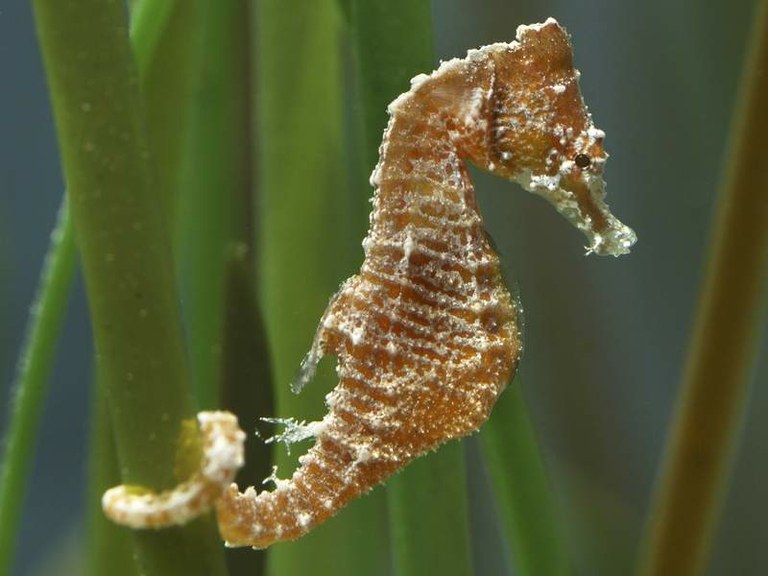Researchers have discovered the seahorses’ head is uniquely designed for both stealth and speed for capturing unsuspecting prey. Published this week in Nature Communications, researchers Gemmell, Sheng, and Buskey report their findings in the paper “Morphology of seahorse head hydrodynamically aids in capture of evasive prey.”
What researchers wanted to know was how a seahorse, which swims very slowly, could sneak up on prey that is very sensitive to water disturbances. Copepods, for example, are incredibly sensitive to water disturbances and if felt, will zip away from the disturbance so as to evade capture. Could the seahorses’ head somehow be uniquely designed so as to minimize its hydrodynamic profile so they can effectively sneak up on their prey?
The answer is “Yes.” High speed footage was used to watch seahorses’ stalking and attack postures as they snuck up and “snicked” a copepod out of the water column. As can be seen in the below video, a dwarf seahorse (Hippocampus zostrae) easily sneaks up on its copepod prey and sucks it up without the least bit of notice. Follow-up flume experiments confirmed the researchers suspicions.
Take a look at how stealty and fast they are in the below video, which shows a dwarf seahorse sneaking up and capturing a copepod:










0 Comments